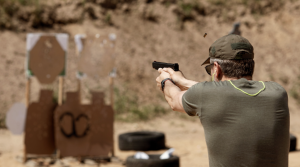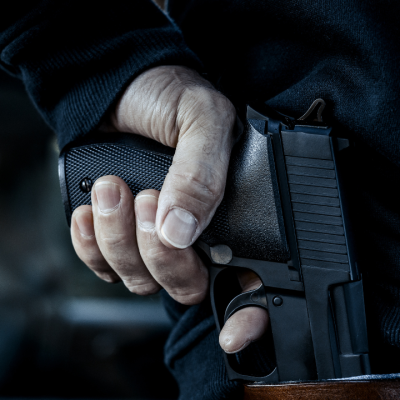When it comes to protecting your home and loved ones, having a solid home defense plan is crucial. While choosing the right firearm is an important step, there’s much more to consider when setting up an effective defense strategy. In this article, we’ll explore key factors to think about when planning your home defense, including safety, layout, and personal preparedness.

1. Home Layout and Entry Points

Understanding the layout of your home is essential in planning a defense strategy. Take note of key entry points—doors, windows, and any other access points that an intruder could target. Identify choke points (narrow hallways, staircases) where you may be able to gain the upper hand if needed.
- Questions to Ask:
- Where are the most vulnerable entry points?
- Do I have clear sightlines from my bedroom or main living areas?
- Are there obstacles that might work in my favor or against me in an emergency?
Once you have these mapped out, consider how you’ll navigate your home if you need to confront an intruder or reach a safer area.
2. Lighting and Visibility

Proper lighting can make a huge difference in your home’s security and your ability to respond effectively. Intruders often rely on darkness to move undetected, so exterior lighting is essential.
- Exterior Lighting: Install motion-activated lights around key entry points to deter potential threats.
- Interior Lighting: Inside the home, nightlights in hallways or staircases can help you move around safely without giving away your position. Many people also install weapon-mounted lights on their firearms to illuminate potential threats while keeping their hands free.
3. Safe Rooms and Exit Plans

Designating a safe room can be a lifesaver in a high-stress situation. A safe room should be a secure area where you can gather your family, lock down, and call for help.
- Key Features:
- Solid doors with reinforced locks.
- Communication tools (cell phone, landline).
- First aid supplies and essentials.
In addition to a safe room, have an exit plan. Determine multiple escape routes in case you need to evacuate quickly.
4. Home Defense Tools Beyond Firearms

While firearms are a powerful component of home defense, other tools and systems can enhance your overall protection.
- Alarm Systems: A monitored alarm system with sensors on doors and windows can alert you and authorities in real time.
- Surveillance Cameras: Modern security cameras provide valuable intel by allowing you to see what’s happening outside or in other parts of your home.
- Reinforced Doors and Windows: Consider installing stronger locks, deadbolts, and even security film on windows to prevent easy access.
5. Training and Preparedness

Owning a firearm is only effective if you know how to use it under pressure. Regular training is essential, especially when it comes to home defense. Your ability to respond quickly, aim accurately, and stay calm during a high-stress situation can make all the difference.
- Firearm Training: Regular practice at the range should include drills for accuracy, speed, and target identification. Consider taking specialized courses focused on home defense.
- Family Drills: Develop a family emergency plan that includes clear roles and responsibilities. Regularly practice drills so everyone knows what to do in case of an emergency.
6. Legal Considerations and Responsibilities

Understanding the legal aspects of home defense is crucial. Laws regarding self-defense and the use of force vary by state and locality, so it’s important to be fully aware of what’s permissible where you live.
- Castle Doctrine vs. Duty to Retreat: Some states have laws that protect your right to defend your home (Castle Doctrine), while others require you to attempt to retreat before using force (Duty to Retreat).
- Use of Force: Understand the guidelines for when and how lethal force can be legally justified in your state.
7. Mental Preparedness

Home defense isn’t just about tools and tactics—it’s also about mindset. In a crisis, mental preparedness can be the difference between freezing up and taking decisive action.
- Stay Calm Under Pressure: Training under simulated stress can help you stay clear-headed in real scenarios.
- Decision-Making: Have a clear understanding of when you’re prepared to use force and what your priorities are—whether it’s defending yourself, protecting loved ones, or retreating.
Conclusion
Effective home defense is about more than just owning a firearm—it’s about having a well-rounded plan that takes into account your home’s layout, available tools, and your ability to respond quickly and legally. By considering factors like home design, lighting, training, and legal responsibilities, you can build a comprehensive strategy that gives you confidence and peace of mind.
READ: BEST GUNS FOR HOME SELF DEFENSE








1 Comments
[…] Best Things to Consider When Thinking About Home Defense Gun Owner Resources August 20, 2024 Best Things to Consider When Thinking About Home Defense […]
Comments are closed.